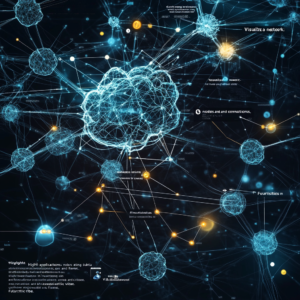
**”Eclipse LMOS: Transforming AI Agent Deployment Across Europe”**
In the grand tapestry of artificial intelligence, there’s a new loom weaving a vibrant and intricate design. Enter Eclipse LMOS (Language Model Operating System), a fresh face in the ring of AI deployment, ready to challenge the status quo and redefine how we orchestrate and manage multi-agent systems. With the old guard fostering a sense of complacency, this open-source platform is setting the stage for an AI renaissance across Europe, particularly thanks to the bold strides made by Deutsche Telekom.
What Exactly is Eclipse LMOS?
Let’s break it down because, my friend, this isn't just your run-of-the-mill software. Eclipse LMOS is more like a symphony conductor for your AI agents, providing a rich platform that gives specialized agents their due and facilitates the performance of complex tasks melodiously together. This isn’t just a hodgepodge of features; it’s a well-thought-out design limber enough to tackle both the simple knowns and the wildly unknown complexities of AI deployment.
Multi-Agent Magic
Break down a complicated task? Count us in! With Eclipse LMOS, you get a multi-agent architecture that segregates responsibilities among specialized agents. Think of it as having a team where everyone knows their role—max efficiency, minimal fuss. This setup doesn't just enhance performance; it also scales beautifully. So, whether you’re wheeling out a sassy chatbot or an AI system that makes your head spin, this structure ensures everything flows nicely.
Seamless Integration
Imagine a world where AI agents interact as if they’re old friends at a coffee shop, casually exchanging ideas and collaborating without a hitch. Eclipse LMOS creates this kind of cordial environment, encouraging smooth communication among agents. Without it, deploying AI would be like trying to herd cats—a chaotic mess!
Scaling Heights
One minute, you could be working on a nifty little script; the next, you might be helming an operation that spans the continent. Eclipse LMOS flexibly adjusts to your needs, promising scalability that doesn’t just keep pace but also propels you into ambitious European markets.
User-Friendly? You Bet!
Let’s get it straight—AI can be intimidating, but Eclipse LMOS aims to change that narrative. You don’t need to be an AI wizard to make sense of it. The design is straightforward and the toolkit robust enough for any budding developer. With access to helpful resources, it’s more approachable than your favorite pair of sneakers.
Open as a Book
Now, here’s the kicker: Eclipse LMOS isn’t a secret society. Built on open standards, it invites you and your fellow innovators in the AI arena to collaborate, share, and push technology to new heights. No chains around innovation here; it’s a free-flowing, idea-sharing utopia!
Eclipse LMOS Features That Make Us Giddy
Just like sprinkles on top of your favorite dessert, the features of Eclipse LMOS elevate it to the next level:
- Agent Management: Handling multiple AI agents should feel like a breeze, and Eclipse makes it easy to create, deploy, and monitor these digital helpers efficiently.
- Communication Framework: A solid infrastructure for agent interaction, ensuring no bottlenecks in teamwork.
- Resource Optimization: You wouldn’t throw your money away in a bar; apply the same logic to your AI resources. Eclipse LMOS makes sure you’re using them wisely.
- Extensible Platform: Think of it like building your sandwich exactly the way you want it—custom enhancements and integrations are a given.
- Development Tools: Equipped with a full suite of tools—like the Kotlin DSL framework called LMOS Arc—creating multi-agent systems couldn’t be more exciting.
Deutsche Telekom: A Case Study in Action
Now that you’re salivating over what Eclipse LMOS can do, let’s take a peek at how Deutsche Telekom has embraced this game-changing platform. Their initiative, proudly dubbed the “Frag Magenta 1BOT” program, is a beautiful blend of ambition and technology, rolling out GenAI across ten European nations. Picture this: AI agents engaging with customers through chat, voice, and other methods. Quite the feat, right?
Key Takeaways
When Arun Joseph and Patrick Whelan talked about launching AI agents at “breakneck speed,” they underscored the sheer dynamism of Eclipse LMOS. They developed an in-house toolkit evolved into a complete platform. From what they’ve learned, we see that a robust multi-agent architecture is not just beneficial—it’s transformative, speeding up the deployment of AI agents in customer interactions.
Ready to Dive into Eclipse LMOS?
If you're fired up and eager to jump into the action with Eclipse LMOS, here's how to dip your toes:
- Documentation: The launchpad for your journey awaits at the Eclipse LMOS documentation. Detailed guides will coach you no matter your project scale.
- Community: We all need a cheering squad. Join the Eclipse LMOS community, a gathering of minds innovating in the world of multi-agent systems.
- Core Repositories: Don’t be shy! Explore essential components like LMOS Arc, LMOS Demo, and LMOS Sample Agents to gain hands-on experience with the platform.
Conclusion
Eclipse LMOS isn’t just another tool on the shelf—it's a veritable revolution wrapped in code, ready to shake up AI development. With its sharp multi-agent architecture, unparalleled integration, and friendly design, it’s positioned to redefine how we approach AI across Europe. Whether you’re an old hat in tech or just starting your journey, Eclipse offers a robust toolkit that promises to accelerate your AI projects and infuse them with creativity.
Want to stay up to date with the latest news on neural networks and automation? Subscribe to our Telegram channel: @ethicadvizor.
The future of AI is unfolding right before our eyes, and Eclipse LMOS stands as a catalyst for what lies ahead. So, step right up and join the revolution—it’s an exhilarating ride!

